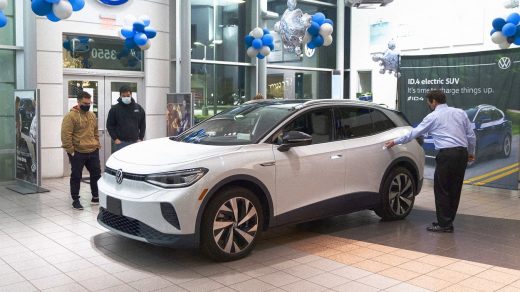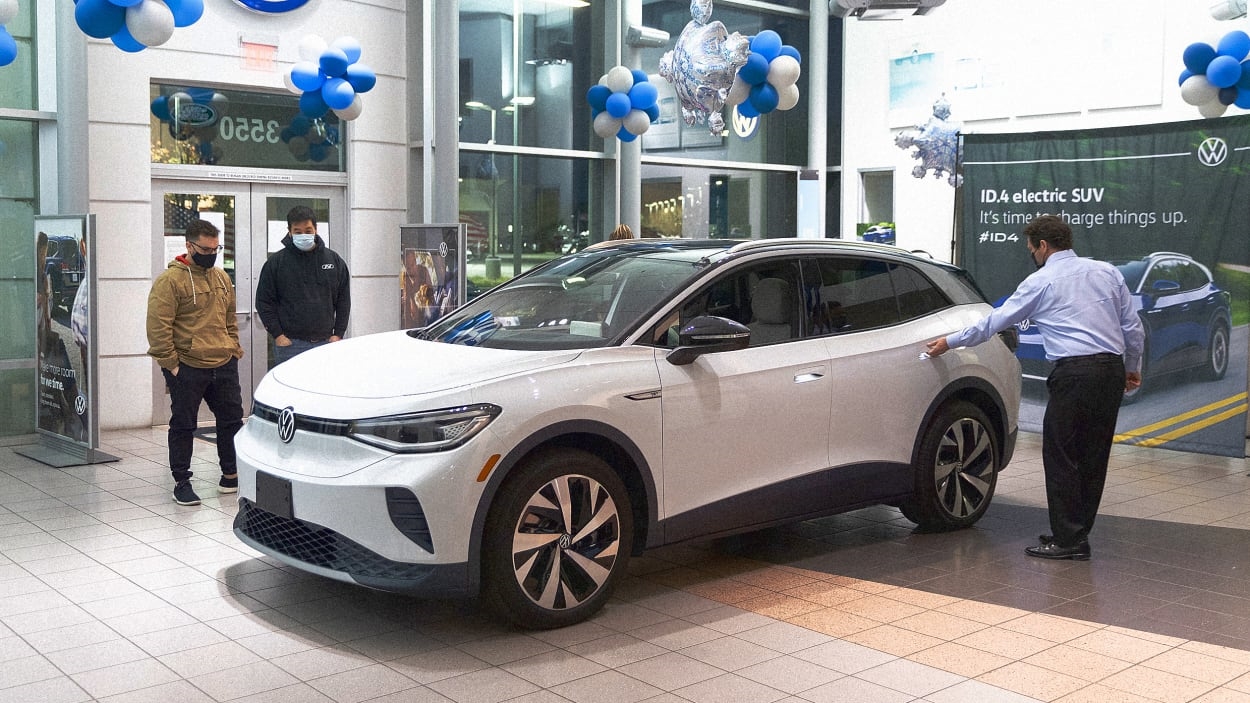EV sales are growing because the features keep getting better. That bodes well for the future
By Dan Gearino—Inside Climate News
This article originally appeared on Inside Climate News. It is republished with permission. Sign up for its newsletter here.
Electric-vehicle market share has soared in the last decade, but there has been no measurable change in the share of consumers who want to buy an EV just because it’s an EV.
This finding, from a recent paper in the scientific journal, Proceedings of the National Academy of Sciences, indicates that the growth in demand for EVs is largely due to the appeal of the models’ technology and features, not a deeper attachment to the idea of owning an EV than in the past.
The results were surprising to Kenneth Gillingham, a Yale University economist and a coauthor of the study. “I went into it actually expecting to see some pretty notable changes in consumer preferences,” he said.
He embarked on the research project thinking that the number of people who are predisposed to wanting an EV would have risen in the last decade.
While some car buyers may indeed want an EV on principle—like many of the early adopters who helped the vehicles get their first couple of percentage points of market share—researchers report that the size of this group does not appear to have changed. Meanwhile, EVs made up 7.2% of the market for new cars and light trucks in the first quarter of this year, more than double the share from two years ago, according to the research arm of Cox Automotive.
Or, as another coauthor of the study, Carnegie Mellon University engineering professor Jeremy Michalek, puts it: “Consumers haven’t changed. It’s technology that’s driving EV adoption.”
What does this say about the EV market?
It means that as EVs improve their features, the rapid rise in sales should continue. The features helping to drive sales include long battery ranges, fast acceleration, and low costs for maintenance. But these specifics don’t quite capture the appeal of the whole package, which is that many consumers find EVs to be fun to drive in terms of ride quality in a way that gasoline vehicles are not.
Also, it’s important to note that this most recent survey of prospective buyers was conducted in 2020 and 2021, before the introduction and availability of some intriguing technologies, like the ability of an electric vehicle to provide battery backup to a house.
The biggest factor hindering EV demand is that the models are more expensive than equivalent gasoline models, the paper finds. But the cost gap is shrinking, which should help with growth in market share.
“This is positive news because it’s showing that even when we’re talking about mainstream consumers, they’re still valuing the attributes” of all-electric vehicles, said Kate Whitefoot, another coauthor and engineering professor at Carnegie Mellon. “And as we continue to see increases” in a range of [EVs] and “dropping prices relative to gasoline vehicles, more and more mainstream consumers will choose electric vehicles.”
The paper is based on answers to online questionnaires from 734 people who planned to buy a car and 862 people who planned to buy an SUV in 2020 or 2021. The authors compared the responses with those from a survey conducted in 2012 and 2013.
Whitefoot emphasized that the results present a picture of all car and SUV buyers, as opposed to zeroing in on people who already drive EVs or plan to buy an EV.
The authors also drew on projections of advancements in vehicle technologies from the National Academies of Sciences, Engineering, and Medicine and predicted what consumer preferences might look like in 2030.
They found, for example, that a majority of consumers would choose the projected 2030 version of an EV like the Nissan Leaf when given a choice between that and the 2030 version of an equivalent gasoline model, the Nissan Versa.
The main differences between now and 2030 would be in cost and battery power. The price gap between the Leaf and the Versa would be less than half the $10,000-plus that it is today before tax credits. And the Leaf is projected to have about 300 miles of range on a charge in 2030, compared with 149 miles today.
Some of these findings seem obvious. Of course, a decrease in the price premium for an EV will help sales, as will increases in battery range.
What’s striking isn’t that those factors matter. It’s how much they matter. The change in prices and the improvements in features will have a strong influence on what consumers are considering when they go to the dealership, even if they have no other reason—air pollution, climate change worries, public reputation—to favor an EV.
I asked Gillingham to spell out the main factors that could prevent this shift in the market from happening as quickly as he expects.
He listed three. Automakers may not have enough EVs available to give consumers a range of choice between equivalent gasoline and electric options; a lack of adequate charging infrastructure could slow the growth of people’s willingness to buy EVs; and the projections of technological advancements from the National Academies could turn out to be overly optimistic.
That final point touches on some of the most complex elements of the transition to EVs, like the availability of lithium and other battery materials and the speed in development of next-generation batteries that have much longer ranges.
But that’s enough throat clearing. The larger point is that we’re heading to a market in which EVs will be the leading options largely because they have better features. In that market, we may stop thinking of them as EVs. As others have said before me, they’ll just be cars.
(21)



